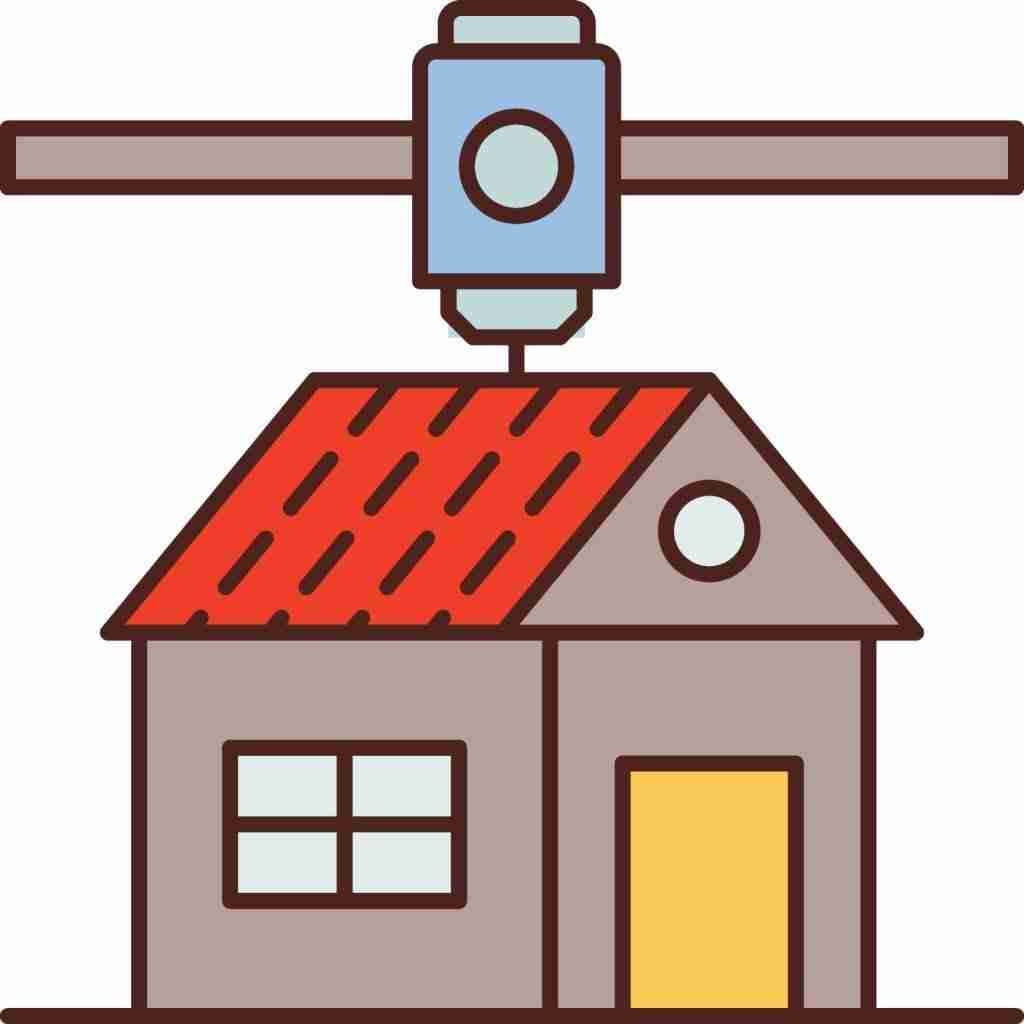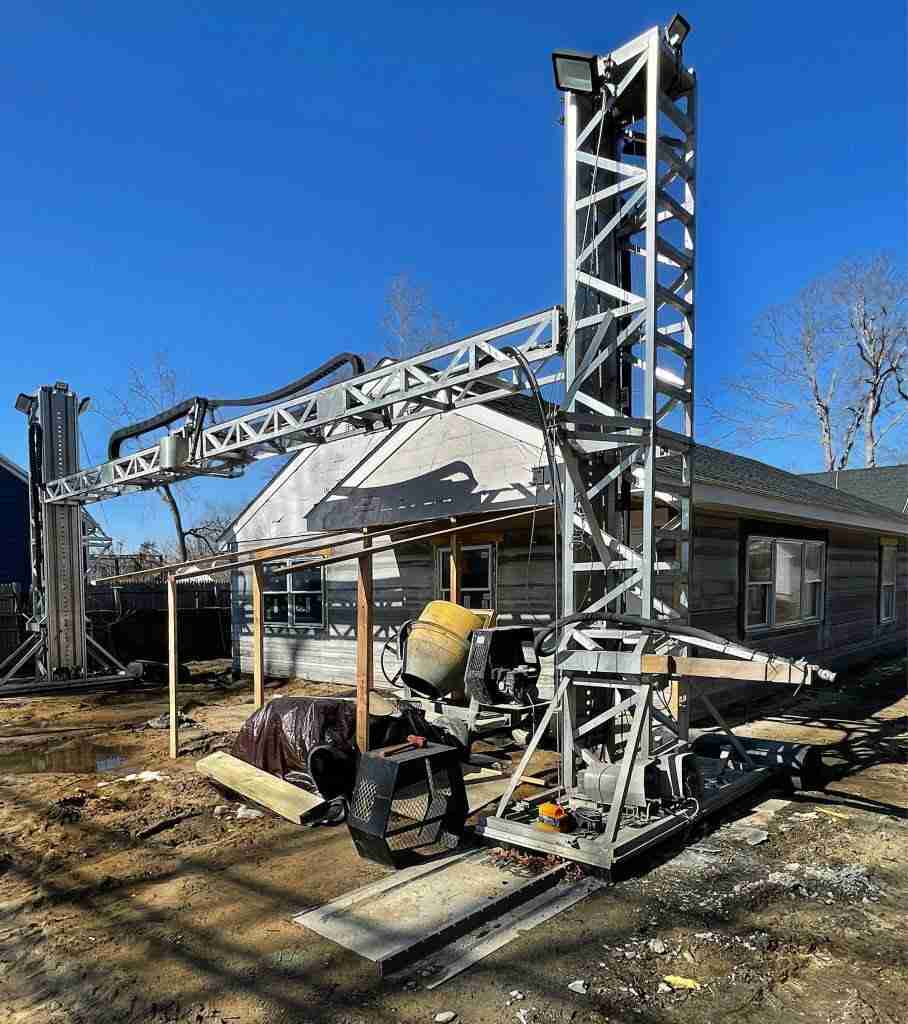Since the late 1980s, 3D printing has progressed by leaps and bounds in several waves of 3D printing technology and has been qualitatively improved. 3D printing (3D printing), also known as additive manufacturing or three-dimensional printing, exists as a special printing technology. Compared with traditional building construction technology, the combination of 3D printing technology and building construction has the following characteristics and advantages: First, the construction speed is fast. With the support of 3D printing technology, the integration of various single raw materials can be quickly realized to form composite materials with better performance so that the overall construction speed is significantly improved; the second is construction safety. With the support of 3D printing technology, the entire construction process does not require A large number of people are involved in it so that the construction safety risks have been reasonably avoided and controlled; the third is the low construction cost. Since there is no need to use formwork during 3D printing construction, the construction cost has been significantly saved, and the application efficiency of various waste by-products is high, so it also has the characteristics of green environmental protection. Elimold is unique among many companies applying architectural 3D printing production technology.
Although the development of many industrial-grade 3D printers is driving rapid changes in the development and manufacturing of new products, the proportion of 3D printing technology in the global manufacturing industry is still slightly insufficient, and its development and application will also be affected by various factors. Influences. However, as more and more companies like elimold join in the research and development and innovation of 3D printing technology for a long time, the functions of printing equipment will be gradually improved as they continue to try and apply the combination of 3D printing technology and building construction. In the future, 3D printing technology will gradually lead the global manufacturing industry’s new trend and direction.
The application of 3D printing technology in construction is called 3D concrete printing technology. Using special 3D printers, concrete materials with high toughness and strength are doped with various special materials as 3D printing raw materials and operate with 3D printers. Way to lay the prepared materials on floors, walls, and ceilings. 3D printing concrete technology not only reduces the manual labor in the construction process, thereby shortening the construction time and avoiding unnecessary accidents during the construction process.
At the same time, the application of intelligent construction in the construction industry allows Party A and the designer to have a clear budget for their costs at the beginning of the project. Automation technology replaces human labor and avoids uncertain factors caused by human factors, such as human-caused construction. The delay caused the construction cost to exceed the budget. 3D printing automation technology clarified the construction period and improved the control of the entire project cost.

Elimold’s current technology application main business is divided into three product lines, outdoor furniture, single-story residential, and large urban landscape. To cater to the emerging outdoor consumer market, outdoor parts are designed based on 3D printing concrete construction technology; that is, people create custom-made home landscapes such as flower beds and fireplaces in small outdoor activity areas or community public spaces in their backyards. At present, the outdoor part is an emerging market with great potential, and it is constantly using technology to launch small-scale garden landscapes in the family iteratively.
This technology also has the advantage of flexible equipment due to the modular design. The convenient technology of 3D printing is used to create minimalist small houses, which are widely used in low-income families’ guaranteed housing and short-term rental homestays (for example, Airbnb). Wider application. Using batch printing technology, a house for two adults can be built in 3-4 days. This model can also be widely replicated in the community, allowing short-term welfare housing for the homeless and the homeless to provide step-by-step assistance.
Architectural 3D printing Depending on the technology employed, printing can produce multiple components simultaneously, multiple materials can be used, and multiple colors can be used. Accuracy can be improved through a high-resolution subtractive process that removes material from oversized prints. Some techniques include dissolvable materials that support overhanging features during fabrication. Materials such as metals can be expensive to print, so it may be more cost-effective to print the mold and then use it to make the item.
The advantages of architectural 3D printing
1. Reduce material cost for concrete pouring
This one improvement is to reduce material waste greatly. 3D printers use the exact amount of concrete needed for walls, floors, or whatever you want to build. So there is no need to order in bulk as you know exactly how much material your project needs. Not only is this a more sustainable and environmentally friendly way to build, but it also reduces costs for contractors.
2. Build faster
This is where concrete 3D printers differentiate themselves from traditional construction methods. While a project can sometimes take weeks or months, a 3D printer can often complete a project in hours or days.
3. Better durability
While testing concrete in the early stages of construction is still necessary, 3D printers have been found to help improve the durability of structural elements. This is partly due to how the materials are made and assembled, and a more durable building means fewer repairs are required.

The impact of 3D printing on the construction industry
With 3D printing, construction professionals and their clients can communicate more clearly and efficiently. Even clients without a background in architecture can better articulate their needs and ensure everyone is on the same page. Most of a client’s expectations come from an idea, and 3D printing makes it easy to realize that idea beyond the archaic pencil and paper methods.
3D printing offers considerable opportunities for the construction industry to become greener, more cost-effective, and often with decent profit margins. As 3D printing research continues to develop, it will be gratifying to see the benefits of technology to many aspects of the construction industry.
About Elimold
Established in 2021, Elimold is an industrial-grade 3D printing service provider. We produce molds and patterns for metal casting on demand with service centers in Germany, India, China, the UK, and the US. Main applications include:
- Molds and cores for sand casting.
- Plastic models for precision casting.
- Display models for various industrial fields.
The company’s customer base includes established car manufacturers and their suppliers, foundries, and innovative companies from art, architecture, and design.
